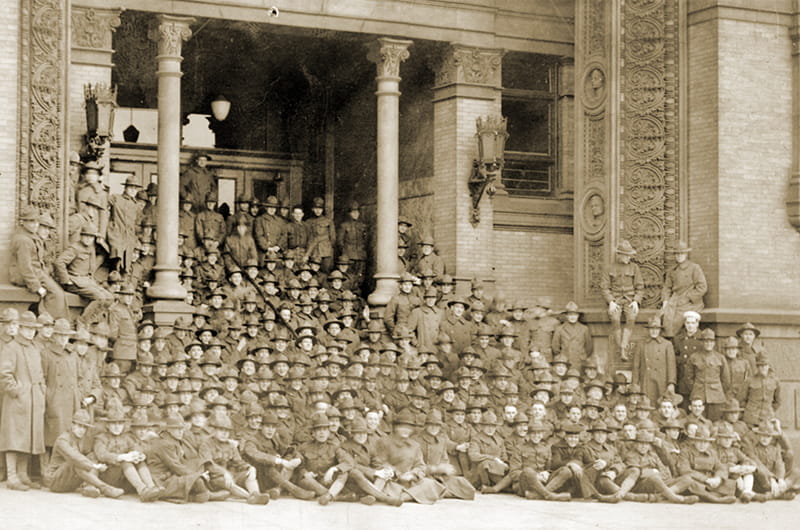Ask the Archivist: Drexel During World War I

This summer we mark the anniversary of the start of the First World War, 100 years ago in 1914. Let's look back at Drexel a century ago, at the dawn of a war between European powers that would rage for four years, killing more than 9 million people.
In 1914, the Drexel Institute of Art, Science and Industry was barely two decades old. It had just experienced its first change of leadership with the retirement of its first president, James MacAlister. The new president, Hollis Godfrey, arrived in December 1913 and immediately began to reorganize the Institute. Godfrey closed the Library School and consolidated Drexel's many departments into three schools: Domestic Science and Arts, Engineering and Secretarial.
Before 1914, Drexel offered diplomas and certificates rather than college degrees. Beginning in 1914, engineering students could take a four-year college course leading to a bachelor's degree. The following year, Drexel began to offer domestic arts and secretarial college courses. For students who could not study full-time during the day, the Evening School offered five-year certificate courses in domestic arts and engineering, as well as various secretarial certificates. Students enrolled in the day schools in 1914 paid tuition and fees of $140 for the entire year.
The United States' entry into the war in 1917 threatened to sharply curtail enrollment as young men enlisted in the armed forces. The Institute responded to the war by exploring new approaches to keep men and women on campus.
In order to prepare its graduates to serve the nation in wartime, Drexel initiated a program called War Courses for Women. A new major in dietetics, begun in 1918, was the first in the nation to be recognized by the Army Medical Corps as preparation for work in military hospitals. The Secretarial School's war course for women was the first to be considered an official preparatory course for employment as a statistical secretary by the Federal Civil Service Commission. Drexel's promotional brochure noted that students who completed the program would be eligible to apply for civil service jobs paying $1,000 to $1,800 per year. Extension courses were offered to the community on practical topics such as beekeeping, vegetable gardening and food preservation.
The Students Army Training Corps (SATC) allowed men to both enlist in the military and enroll in college in the fall of 1918. Corps members wore uniforms, lived in barracks and took classes (such as "Issues of the War" and "Army Paper Work") that were designed to meet the needs of the U.S. War Department. This photograph shows Drexel's SATC unit gathered on the steps of the Main Building. This new experiment did not last long, however, as the armistice ending the war was signed on Nov. 11, 1918. Drexel's SATC would become a Reserve Officers' Training Corps (ROTC) unit.
The Drexel Institute would continue its dramatic change after the war ended, most notably by launching a co-operative education program in engineering in January 1919. Looking back 100 years ago, we see an institute on the verge of becoming a school much like the University we know today.
Drexel News is produced by
University Marketing and Communications.